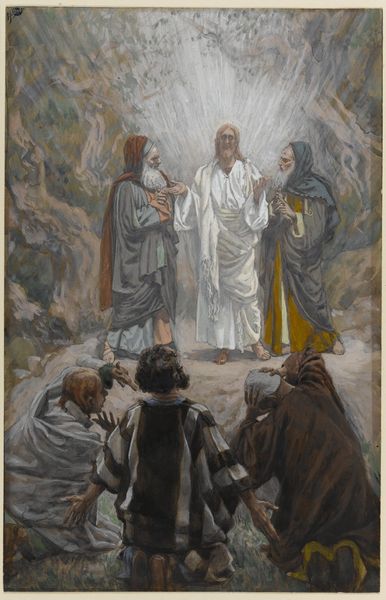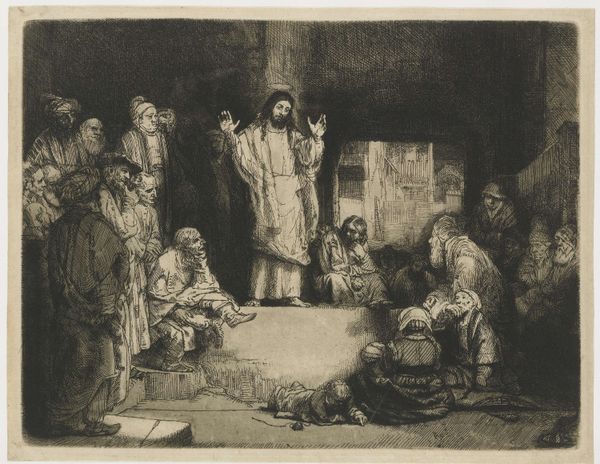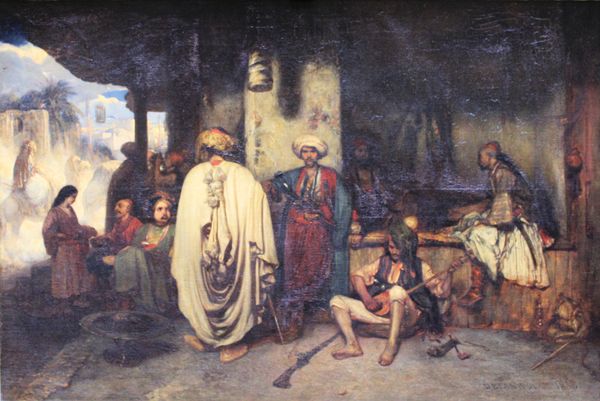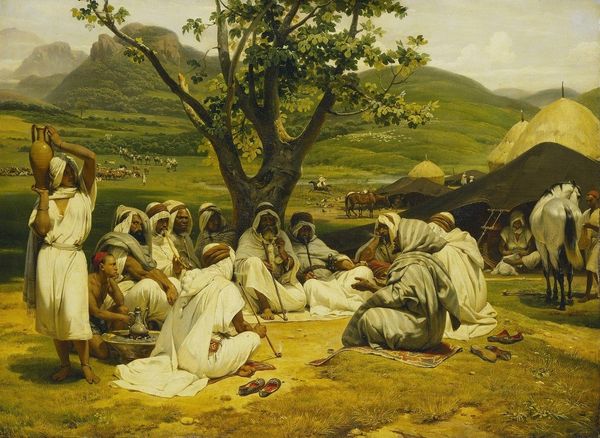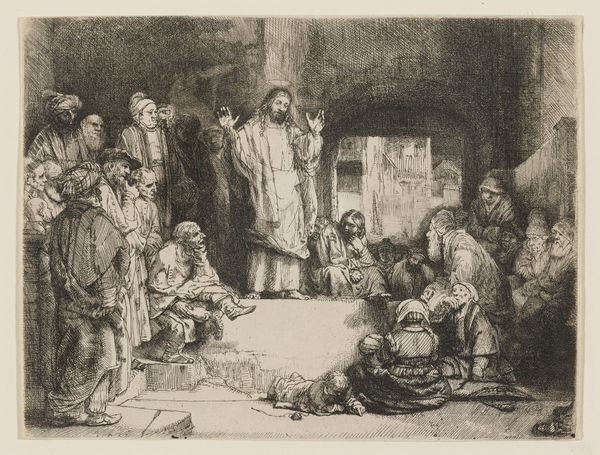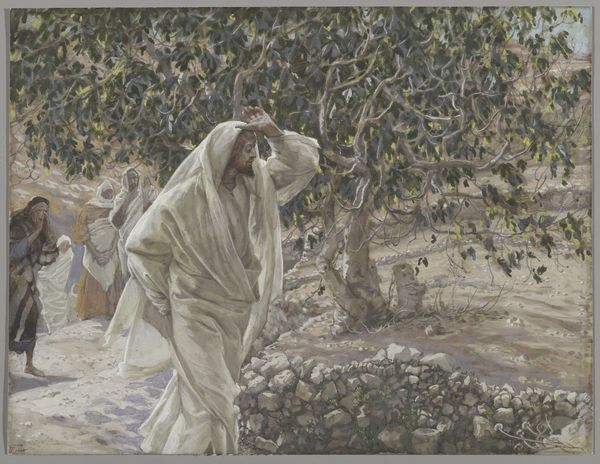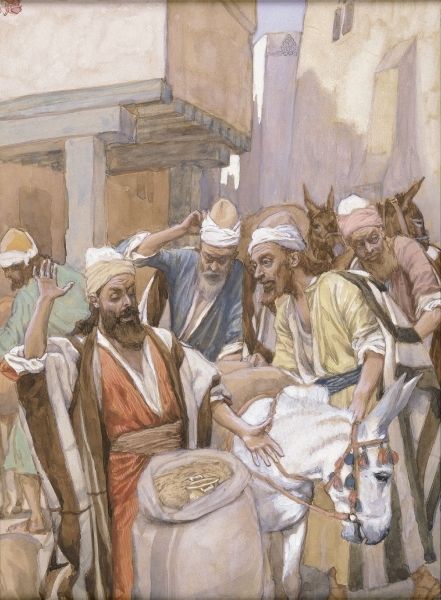
textile, watercolor
#
water colours
#
narrative-art
#
impressionism
#
textile
#
watercolor
#
genre-painting
#
history-painting
Copyright: Public domain
Editor: We are looking at James Tissot's watercolor, "The Washing of the Feet," housed at the Brooklyn Museum. The muted color palette and loose brushstrokes create a somber, intimate atmosphere. What is your take on this scene? Curator: A rigorous look reveals Tissot's careful articulation of space and form. Note how he uses the draped textile background to establish depth. The arrangement of figures, predominantly clad in simple garments, forms a rhythmic pattern that guides the viewer’s eye. Editor: Rhythm? I thought it seemed quite chaotic, everyone reacting differently. Curator: Observe closely: the repetition of draped forms, the echoing curves of the figures' postures. Even the color palette— dominated by earth tones with highlights of blue and white – contributes to this sense of ordered complexity. Do you see how the play of light and shadow across the figures’ faces sculpts their features, highlighting their varied expressions? Editor: I see that, yes. But where does the eye really want to focus? Curator: The focal point lies in the interstitial space created between the standing figure with the ewer and the bending figure. The diagonal formed from that space draws you in. This isn't merely a representational painting; it's a sophisticated interplay of formal elements. Editor: So, it's more about how it's constructed than what it's about. Curator: Precisely. Tissot utilizes form to elevate an ordinary subject to something worthy of intense consideration. It's in the structure itself that we locate the ultimate meaning. Editor: Fascinating, I never would have noticed that. It shows the value of slowing down and really observing the composition. Curator: Indeed. Paying attention to the details, to the building blocks, allows the real dialogue with the artwork to emerge.
Comments
No comments
Be the first to comment and join the conversation on the ultimate creative platform.
